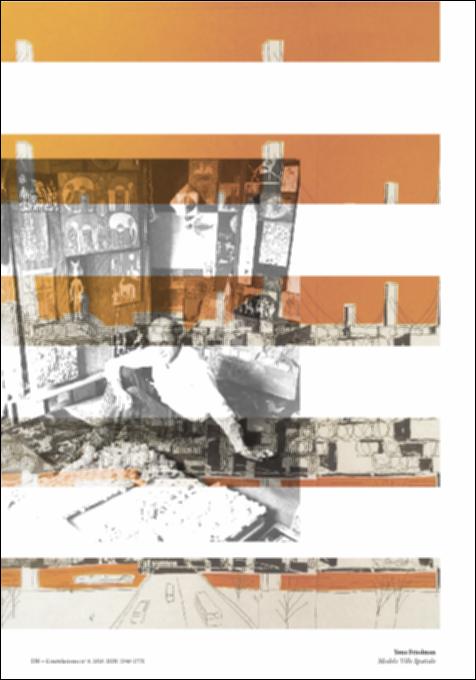Please use this identifier to cite or link to this item:
http://hdl.handle.net/10637/11818Cuando la nada se hace visible: el límite entre lo visible y lo invisible como origen de una próxima arquitectura.
| Title: | Cuando la nada se hace visible: el límite entre lo visible y lo invisible como origen de una próxima arquitectura. When the Void Becomes Visible: The Limit between the Visible and the Invisible as the Origin of a Future Architecture |
| Authors : | Pérez Díaz de Arcaya, Edurne |
| Keywords: | Black Mountain College (Carolina del Norte); Arquitectura norteamericana; Pragmatismo; Nothingness; Absence; Laboratory |
| Abstract: | En 1933 surge en Carolina del Norte una escuela experimental que coincide
con la llegada de aquellos que han de abandonar Europa, el Black Mountain
College. Mientras los exiliados del viejo continente tratan de continuar en la
nueva patria una historia lineal, la sociedad americana precursora del pragmatismo,
se despoja de todo lo heredado y encuentra en la nada su propio
punto de partida. En plena crisis económica, y tras la renuncia voluntaria de
todo lo anterior, la nada, el material más abundante, representa la novedad.
El auge de la ciencia y el descubrimiento del método de laboratorio que ya
cosechara éxitos en el BMC, abren paso a una red de laboratorios domésticos
que ambicionan manipular la nada para hacerla por un instante visible. La
arquitectura encuentra en las efímeras apariciones de tan volátil material el
origen de sus próximas ideas. El umbral en el que la nada se hace visible es
la forma primigenia de una arquitectura próxima. In 1933, as people were fleeing Europe, an experimental school opened in North Carolina called Black Mountain College (BMC). While the exiles from the old continent strove to continue a linear history in their new homeland, American society, the forerunner of pragmatism, shed everything inherited and found its own point of departure in the void. During the economic crisis and after the voluntary renunciation of everything that had come before, the void, the most abundant material, represented newness. The rise of science and the discovery of the laboratory method that would reap success in the BMC opened the way to a network of domestic laboratories that aspired to manipulate the void to make it visible for an instant. Architecture finds the source of its following ideas in the ephemeral apparitions of such volatile material. The threshold at which the void becomes visible is the original form of future architecture. |
| Description: | En: Constelaciones 8.0. ISSN. 2340-177X. n. 8, 2020, pp 137-153 |
| URI: | http://hdl.handle.net/10637/11818 |
| Rights : | http://creativecommons.org/licenses/by-nc-nd/4.0/deed.es |
| Issue Date: | 1-May-2020 |
| Appears in Collections: | Núm. 8 (2020) |
Items in DSpace are protected by copyright, with all rights reserved, unless otherwise indicated.


